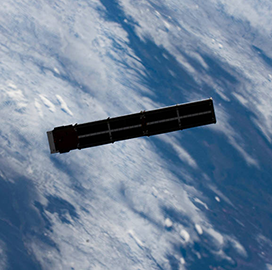The International Space Station has deployed a CubeSat that holds new radio, propulsion and communications technologies, as well as improved power performance and increased storage.
TechEdSat-10, the 10th entry to the Technology Educational Satellite series, features four cameras, nine processors, one graphics processing unit, eight radios and power storage with the capacity for 150 watt-hours, NASA said Tuesday.
The CubeSat is also equipped with exo-brake technology that produces drag to move the satellite away from orbit.
Technology Educational Satellites build on support from students of California Polytechnic State University, the University of Idaho, University of California Riverside and San Jose State University.





